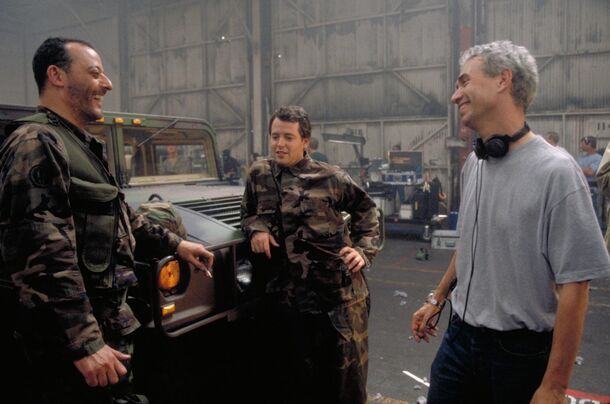Netflix's Blockbuster Is Not the First Spite Project Spawned by Hollywood

Bend, Oregon. The location of the last Blockbuster on earth serves as the setting for the latest Netflix workplace comedy. It's a peculiar decision, considering the history Netflix has with the former video rental giant.
The bad blood between the two companies is nothing new. For starters, there is little doubt that Netflix contributed to the demise of Blockbuster. And what's more, it's a seismic shift from the early 2000s when Blockbuster infamously turned down an offer to buy the fledgling enterprise for only $50 million. Now, with a reported worth of nearly $20 billion, it's sufficient to say Netflix has become the king of entertainment.
However, Netflix's decision to rub salt in the wounds of Blockbuster is far from the first Hollywood spite project. In fact, the entertainment industry has a long (not to mention amusing) history of high-profile celebs being motivated by animosity. What else would you expect from an industry renowned for inflated egos, artificial drama, and vindictiveness?
Here are some classic examples of Hollywood projects that were created partly out of spite:
Maximum Overdrive
(3).jpg)
Stephen King is arguably considered one of the best authors of all time. However, he's made it clear on several occasions that he was not a fan of how Stanley Kubrick adapted his horror classic, The Shining.
Accordingly, when it came time to adapt his next book into a feature-length film, King elected to command the director's chair. The result was Maximum Overdrive, a 1986 disaster in which King later confessed to being "coked out of his mind" during filming.
Indiana Jones
Before Steven Spielberg transformed into one of the best directors of all time, he was a little-known filmmaker that badly wanted to produce a James Bond film. The problem? The franchise was not exactly interested in hiring Spielberg, rejecting him on two separate occasions.
Thus, Spielberg opted to create a franchise of his own with Indiana Jones. The comparisons are obvious as some critics define it as an American counterpart to James Bond. For example, the white tuxedo Harrison Ford is wearing in the opening to Temple of Doom is a direct ode to Sean Connery's outfit in Goldfinger. Later, Spielberg would cast the former Bond as Indy's father in The Last Crusade.
Shrek
Jeffrey Katzenberg helped turn around Disney in the 1990s thanks to classics like Beauty and the Beast, The Lion King, and Aladdin. However, after Disney president Frank Wells passed in 1994, Katzenberg resigned following the promotion of Michael Eisner. The two never got along and motivated Katzenberg to create DreamWorks as a direct rival to Disney.
First, Katzenberg unsuccessfully attempted to compete at the box office with Disney and Pixar by releasing Antz the same year as A Bug's Life. Later, Katzenberg created another project simply out of malice, this time successfully as Shrek dominated at the box office. Shrek makes no apologies for going after the Disney brand as it's the butt of several jokes in the movie.
Godzilla

Robert Ebert and Gene Siskel were the two most prominent movie critics in the 90s and therefore not popular with every filmmaker. Roland Emmerich, for example, was not a fan. It's reported that disgruntled with receiving negative reviews for his past three movies, Emmerich deliberately included characters in Godzilla that featured an uncanny resemblance to Siskel and Ebert.
In the 1998 remake, New York City Major Ebert is a bumbling idiot while his assistant, Gene, isn't put in a very good light either. Even the actors that portray the duo even look like the real Siskel and Ebert, making it clear Emmerich created the characters purely out of spite.
